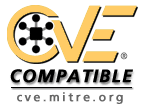Failure to Sanitize Script in Attributes in a Web Page |
| Weakness ID: 83 (Weakness Variant) | Status: Draft |
Description Summary
| Reference | Description |
|---|---|
| CVE-2001-0520 | Bypass filtering of SCRIPT tags using onload in BODY, href in A, BUTTON, INPUT, and others. |
| CVE-2002-1493 | guestbook XSS in STYLE or IMG SRC attributes. |
| CVE-2002-1965 | Javascript in onerror attribute of IMG tag. |
| CVE-2002-1495 | XSS in web-based email product via onmouseover event. |
| CVE-2002-1681 | XSS via script in <P> tag. |
| CVE-2004-1935 | Onload, onmouseover, and other events in an e-mail attachment. |
| CVE-2005-0945 | Onmouseover and onload events in img, link, and mail tags. |
| CVE-2003-1136 | Javascript in onmouseover attribute in e-mail address or URL. |
Carefully check each input parameter against a rigorous positive specification (white list) defining the specific characters and format allowed. All input should be sanitized, not just parameters that the user is supposed to specify, but all data in the request, including tag attributes, hidden fields, cookies, headers, the URL itself, and so forth. A common mistake that leads to continuing XSS vulnerabilities is to validate only fields that are expected to be redisplayed by the site. We often encounter data from the request that is reflected by the application server or the application that the development team did not anticipate. Also, a field that is not currently reflected may be used by a future developer. Therefore, validating ALL parts of the HTTP request is recommended. |
This involves "HTML Entity Encoding" all non-alphanumeric characters from data that was received from the user and is now being written to the request. |
With Struts, you should write all data from form beans with the bean's filter attribute set to true. |
Additionally, to help mitigate XSS attacks against the user's session cookie, set the session cookie to be HttpOnly. In browsers that support the HttpOnly feature (such as Internet Explorer), this attribute prevents the user's session cookie from being accessed by client-side scripts, including scripts inserted due to a XSS attack. |
| Ordinality | Description |
|---|---|
Primary | (where the weakness exists independent of other weaknesses) |
| Nature | Type | ID | Name | View(s) this relationship pertains to |
|---|---|---|---|---|
| ChildOf |  Weakness Base Weakness Base | 79 | Failure to Preserve Web Page Structure ('Cross-site Scripting') | Development Concepts (primary)699 Research Concepts (primary)1000 |
| ParentOf |  Weakness Variant Weakness Variant | 82 | Improper Sanitization of Script in Attributes of IMG Tags in a Web Page | Development Concepts (primary)699 Research Concepts (primary)1000 |
| CAPEC-ID | Attack Pattern Name | (CAPEC Version: 1.4) |
|---|---|---|
| 18 | Embedding Scripts in Nonscript Elements |
| Submissions | ||||
|---|---|---|---|---|
| Submission Date | Submitter | Organization | Source | |
| PLOVER | Externally Mined | |||
| Modifications | ||||
| Modification Date | Modifier | Organization | Source | |
| 2008-07-01 | Eric Dalci | Cigital | External | |
| updated Time of Introduction | ||||
| 2008-09-08 | CWE Content Team | MITRE | Internal | |
| updated Relationships, Observed Example, Taxonomy Mappings, Weakness Ordinalities | ||||
| 2009-10-29 | CWE Content Team | MITRE | Internal | |
| updated Relationships | ||||
| Previous Entry Names | ||||
| Change Date | Previous Entry Name | |||
| 2008-04-11 | XSS using Script in Attributes | |||





